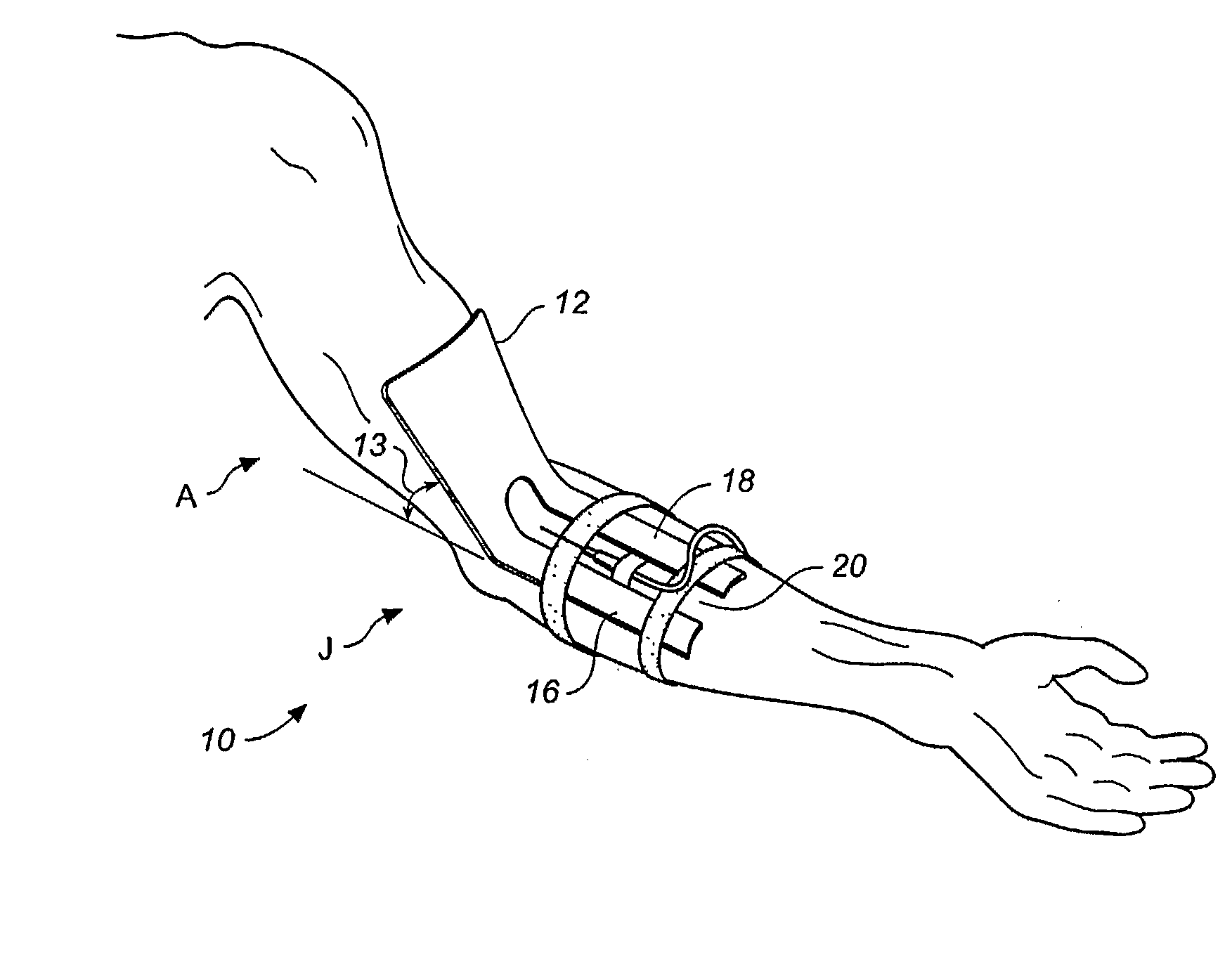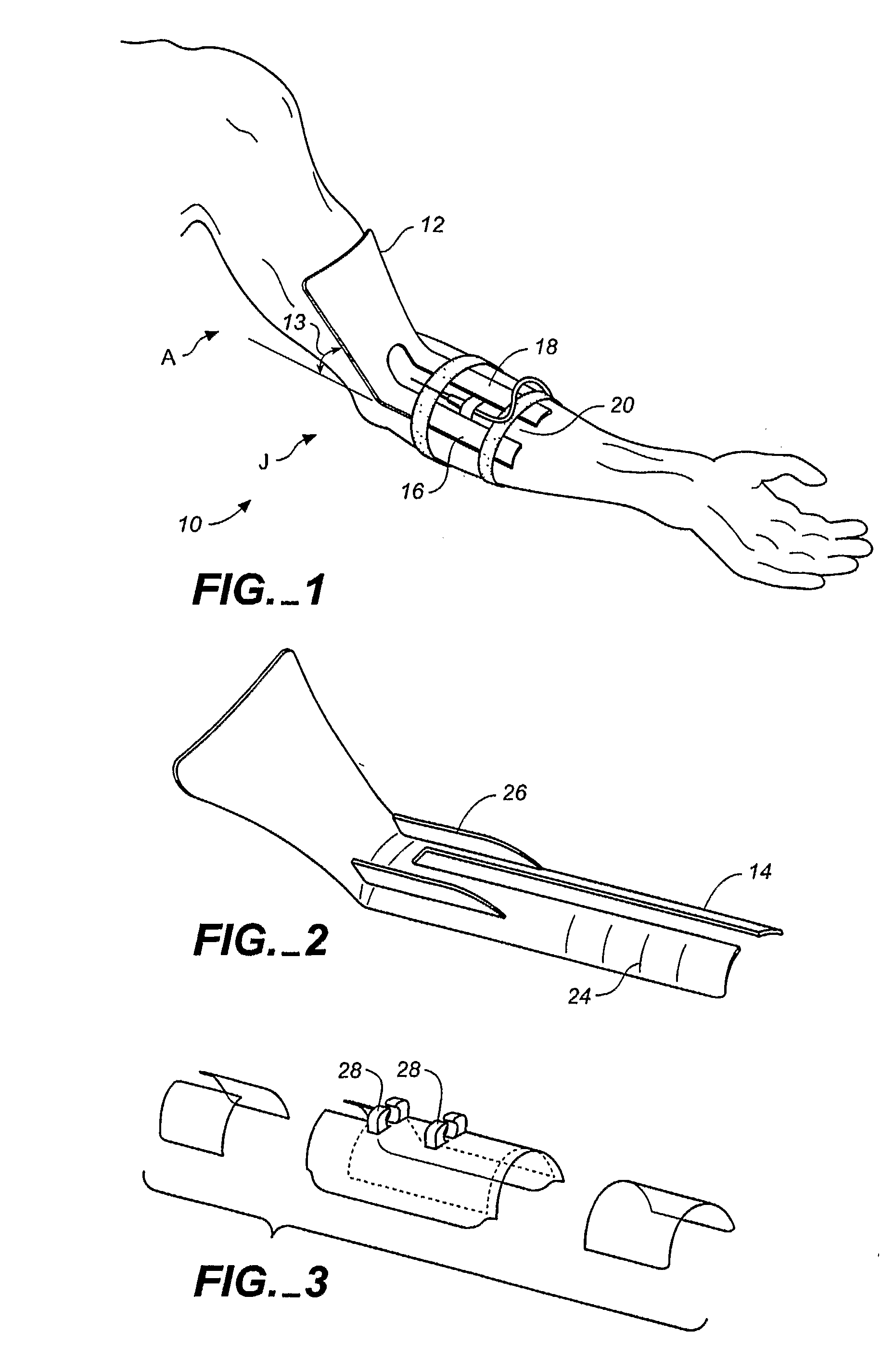IV Compatible limb stabilization apparatus
a technology of limb stabilization and iv catheter, which is applied in the field of veterinary and medical equipment, can solve the problems of inability of the doctor to view this union, the probability of the inadvertent dislodgement of the iv catheter, and none of the problems to achieve the effect of preventing flexion
- Summary
- Abstract
- Description
- Claims
- Application Information
AI Technical Summary
Benefits of technology
Problems solved by technology
Method used
Image
Examples
Embodiment Construction
[0030] Referring to FIGS. 1 through 3, wherein like reference numerals refer to like components in the various views, FIG. 1 is a perspective view of a limb stabilization apparatus 10 in place on a patient's arm A. The splint apparatus 10 includes an upper portion 12 adapted to be positioned above a patient's limb joint J, and a lower portion 14 connected to the upper portion 12 at an angle 13 from 0 to 90 degrees, and preferably between 30 and 60 degrees. The lower portion 14 includes a pair of sides 16, 18 and a central aperture 20 for passage of an intravenous catheter 22. The lower portion 14 is adapted to be positioned and secured below the patient's limb joint, so that the upper portion 12 prevents flexion of the patient's limb joint beyond the angle 13.
[0031]FIG. 2 illustrates that the lower portion 14 of the apparatus could be marked with indicia 24 at intervals (e.g., ½ inch) so that doctors or tech may cut the splint to the proper size for the patient. In addition, the me...
PUM
 Login to View More
Login to View More Abstract
Description
Claims
Application Information
 Login to View More
Login to View More - R&D
- Intellectual Property
- Life Sciences
- Materials
- Tech Scout
- Unparalleled Data Quality
- Higher Quality Content
- 60% Fewer Hallucinations
Browse by: Latest US Patents, China's latest patents, Technical Efficacy Thesaurus, Application Domain, Technology Topic, Popular Technical Reports.
© 2025 PatSnap. All rights reserved.Legal|Privacy policy|Modern Slavery Act Transparency Statement|Sitemap|About US| Contact US: help@patsnap.com


